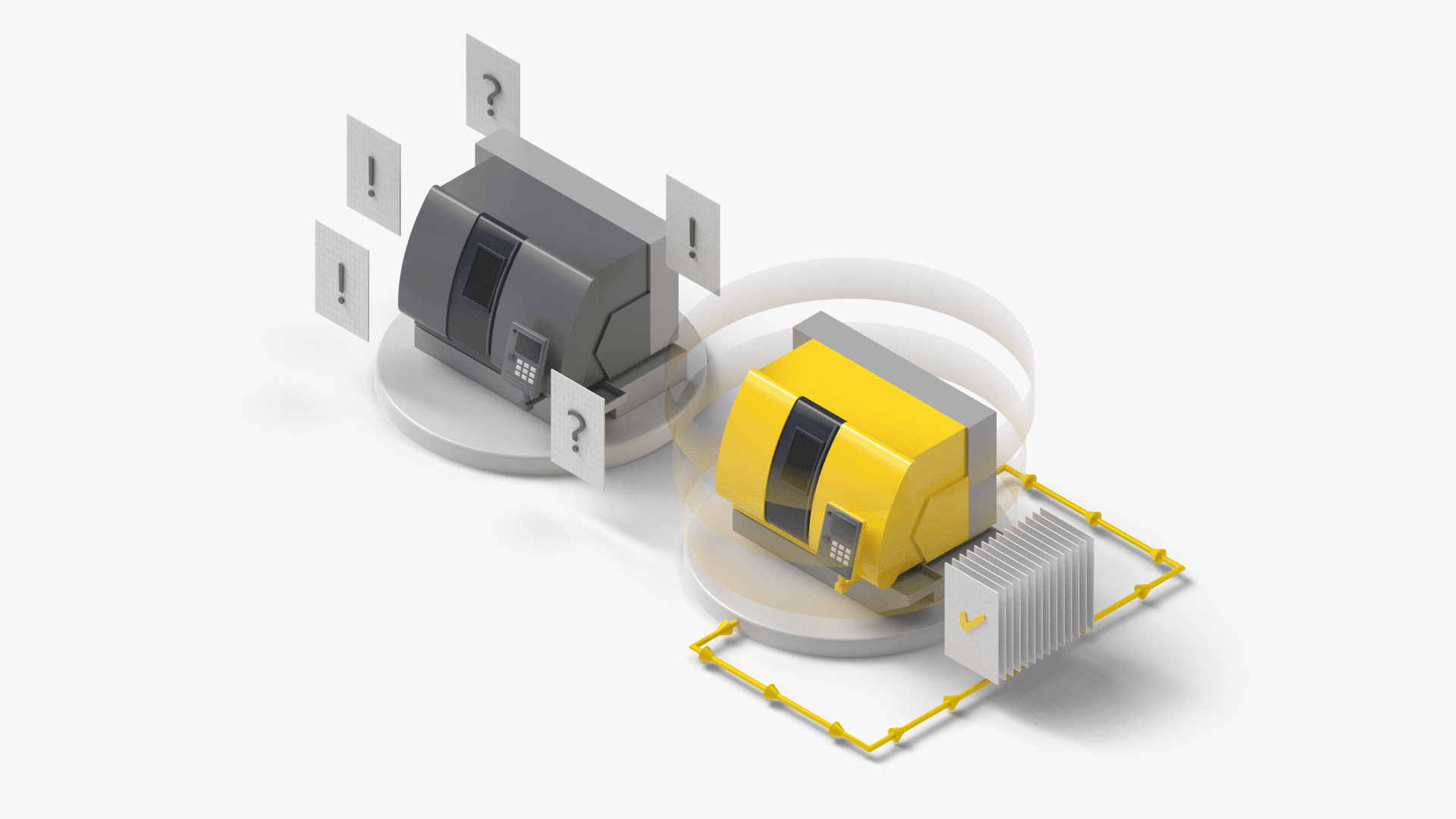Machine and system manufacturers are facing a challenging future. Even before the Corona pandemic, many companies were struggling with sharp declines in orders and falling margins in the new equipment business. For most manufacturers, it is nothing new that service and after-sales is important in itself. Nevertheless, we see that management in particular underestimates how great the need for action and the associated potential in service and after-sales actually is.
In this article, we have therefore summarized the most important facts about service and after-sales in mechanical engineering to illustrate the importance and the resulting need for action.
Why is service & after-sales so important for machine and system manufacturers?
Declining sales figures, falling margins and collapsing orders are currently determining the new system business of many machine and system manufacturers. In this phase, it is even more important to recognize the importance of the service and after-sales business and to prioritize digitalization in service accordingly. With over 1 million employees, mechanical engineering is the largest employer in Germany. Service is the most important driver of profitability, growth and differentiation. Manufacturers with an excellent service business benefit not only from higher profits but also from increased customer loyalty and a higher recommendation rate. Proactive service enables manufacturers to respond better and more precisely to the needs of their customers and thus sustainably increase their own sales.
7 facts in service and after-sales for machine and system manufacturers
Our hypothesis: Manufacturers who focus on service and after-sales now will emerge as winners from this phase. Looking at the figures, this hypothesis can be vividly demonstrated as follows.
1. Greater resilience in times of crisis

In times of crisis, new sales slump by more than 20% on average. Service sales, on the other hand, are more resilient in crises and thus decline by less than 10%. This is due to the fact that, e.g., many machine operators initially refrain from making capital-intensive investments in uncertain times and want to extend the life cycle of their equipment. This in turn creates more demand along the life cycle of machinery e.g. for maintenance, repair, retrofit, spare parts etc. In the Corona pandemic, compared to e.g. the financial crisis of 2008, a different picture initially emerged. In the lockdown / isolation phase Q2/2020, not only new machine sales collapsed, but also service sales, because, for example, service technicians were no longer allowed to travel. However, what is likely to follow over the coming months is a recession in which a slower recovery is to be expected. In this recovery phase, as described above, experience has shown that service revenues are more resilient.
2. Higher profitability compared to new installations

The margins for service sales across 30 industries are around 25%, which is about 2.5 times higher than the margins of new sales in the machine manufacturing sector. This enormous potential is often too little or not fully realized by manufacturers, as most manufacturers operate purely reactive in their service activities, i.e. they proactively offer their customers little or no customized service and after-sales offers.
3. Higher growth in service

Throughout the years from 2006 to 2012, meaning also in the years following the financial crisis, service sales in the machine manufacturing sector grew on average much more strongly and rapidly than new sales. This development will continue to shape the industry in the coming years. Hence, it is crucial for manufacturers to recognize this at an early stage and prioritize their service business right now.
4. Greater predictability of service sales in times of crisis

New machine sales showed significantly higher fluctuations over the years 2006 to 2012. The variance in annual sales was on average 2.1 times higher compared to service sales. This means that service is a reliable and continuous source of income even in times of crisis.
5. High potential for growth in after-sales revenue

According to McKinsey (2019), manufacturers who have full transparency of their installed base and prioritize service sales can increase their after-sales revenue by 30 to 60 percent within 3 to 5 years.
6. Available market space for proactive service

According to the VDMA (2017), manufacturers in the mechanical and plant engineering sector currently only provide services for around 10 to 25% of their installed base. There are many reasons for this, ranging from unawareness of the installed base itself to a lack of knowledge about customers, location and condition of the machines sold.
7. Large influence of service quality on investment decisions
According to Deloitte (2020), service quality is by far the biggest factor (around 50%) for customers of machine and equipment manufacturers when deciding on an investment. In comparison, product quality and price together account for the same share.
The general importance of service and after-sales is not big news for most machine manufacturers, as described at the beginning. Nevertheless, a look at the figures is often the impetus to get started with digitization here. In addition to the latest figures, data and facts summarized above, the key question is then where and how you start setting up your service business today for the digital future.
So what should you, as a manufacturer from the mechanical and plant engineering sector, do today in concrete terms to exploit the potential in the service and after-sales of your installed base? We would be happy to help you find out how you can become a winner from the crisis with service & after-sales, step by step.

 Back
Back